TOURING TINOS VILLAGES
So, we’ve shortlisted some beaches for you and also taken you on a gourmet extravaganza so now we are going to give you what we probably should have given you to start with – some information about Tinos and suggest some villages to visit whilst tanning and eating 😉
The population of Tinos is approx 10,000 and it has a land area of 197km2, a coastline of 114kms and the home of 64 villages. It’s the 3rd largest island in the Cyclades archipelago – Naxos and Andros being the 1st and 2nd. Tinos is far less developed and commercialised than many Greek Islands so if any of you remember Greece back in the 80’s and would like to go back and visit, Tinos is the place to go, it truly is just gorgeous.

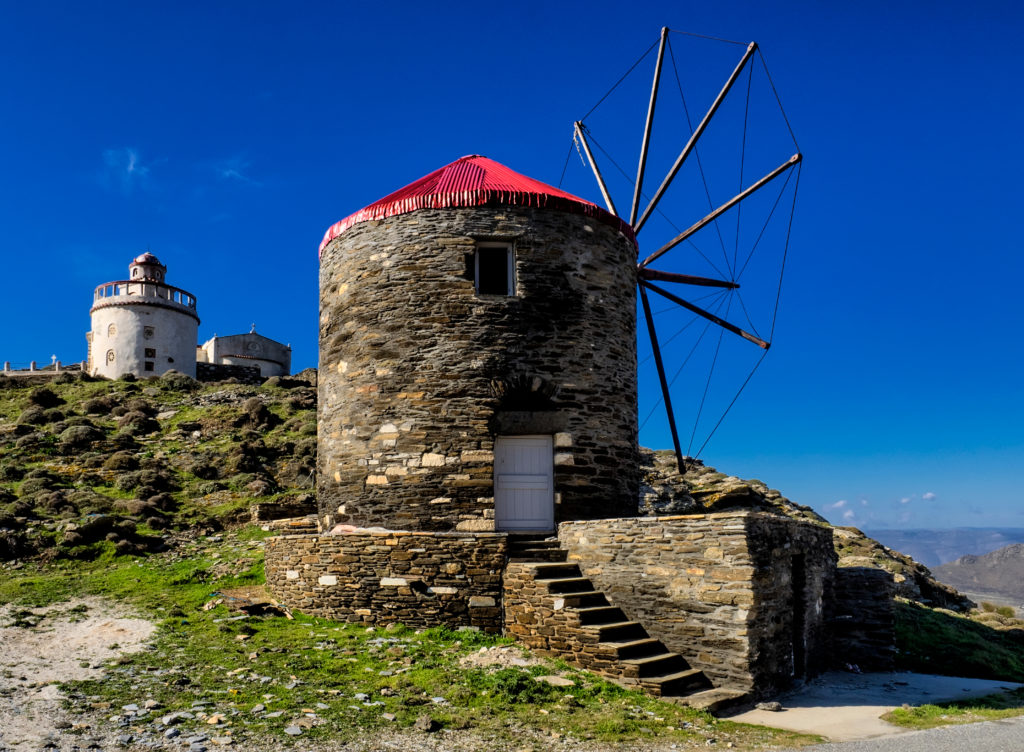
How can we go past the windmills first and foremost? With a land area of less than 200km2 Tinos was home to around 100 windmills, which back in the 19th century would all have been operating and used for milling wheat and would have been heavily relied upon for food for the residents. The last mills were abandoned in the late 70’s and mostly now they are either ruins for sightseeing or repurposed as homes. With the Meltemia wind the mills would have been such a obvious means of processing their grains. The mills are scattered around the island but if you visit Pyrgos, Ysternia, Kardiani, Tarambados, Kambos and Ktikados you will see some particularly impressive mills.
Tinos town you will see sign posted as Chora or Hora and due to the size of the island, most roads will lead to Chora/Hora/Tinos.

Next up there with significance are the pigeon houses, there are currently more than 600 pigeon houses on Tinos, but it’s believed that more than double that were originally built. They are thought to go back to the Venetian period and were built for the systematic breeding of pigeons. The pigeon house was a symbol of noble origin and economic power and the property rights and use of pigeon houses belonged to Venetian Lords but ownership was passed to Tinians under Turkish occupation. Pigeons, offering meat and fertilizer were the main export of Tinos during that time.
Image credit: Greeka.com
Chapels in Tinos – it is estimated that there are approximately 1000 chapels which equates to one chapel per 10 residents .. almost like having your own personal chapel! Orthodox or Catholic they are built on mountain peaks, ravines or even on rocks by the sea, they maintain simplicity and elements of genuine Tinian architecture. You will see them everywhere you go, there are just too many to try and give them justice.

Hydrousa is Tino’s nickname – theory being that the name originated from the abundant springs and waters on the island. There are 86 fountains, mostly built in the 18th and 19th century. Elaborate fountains can be found around Tinos with the villages of Pyrgos, Ysternia, Agapi , volax and Arnados home to some great examples.
And for Greek Orthodox Christians Tinos is the destination for the annual pilgrimage to visit the Miraculous Icon Virgin Mary in the Panagia Evangelistria church. The Feast of the Virgin Mary or Virgin Mary Assumption Day is 15th August. Many pilgrims disembark the ferry and immediately drop to their hands and knees and make their way, 800 mtrs to the church, to show their expression of gratitude and devotion and pray for good health and healing. Pilgrims have been making this journey for centuries. and the period leading up to it is pretty intense too. Visitors are allowed to participate so you can either avoid this date or get in there and experience it all for yourself!
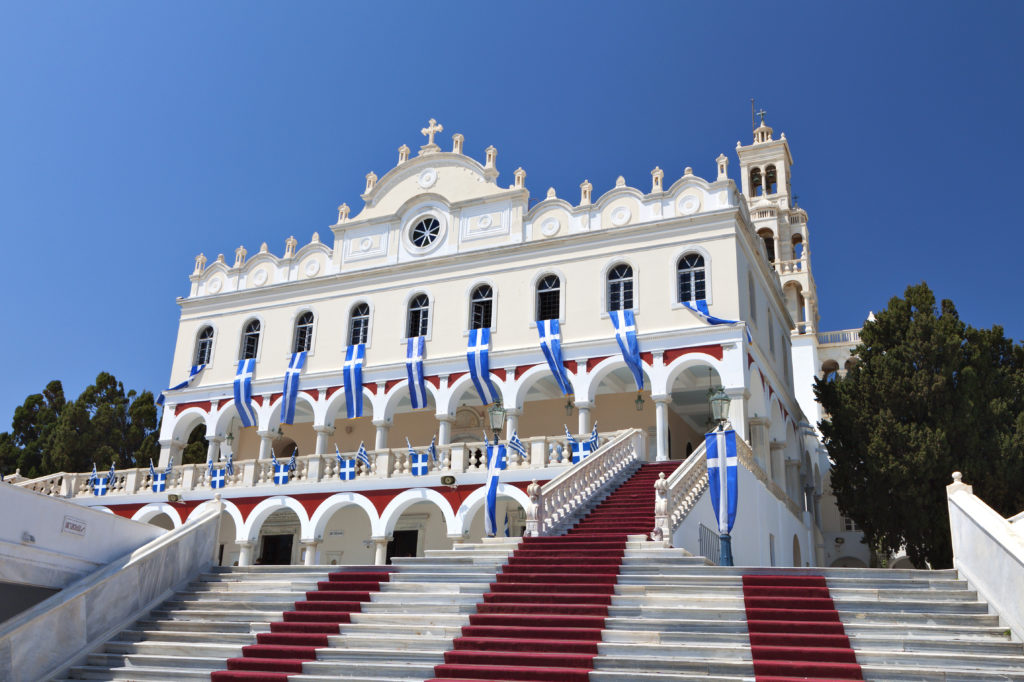
The real beauty of the island is in its villages. Most of them are mountainous, forgotten in another era and some have been abandoned. Others with amazing green landscapes, which in no way remind you of the barren image that most of us have of the Cyclades. Most with traditional stone buildings and narrow cobbled streets and each with their own unique beauty that makes driving around Tinos a delight and a photographers dream.
Tinos is not a large island so it is easy to get around and visit probably everywhere you have on your list, but to help we are going to short list a few villages which you could do as a separate sightseeing drive or enroute to a beautiful beach or on your mission to eat your way around Tinos (or both!)
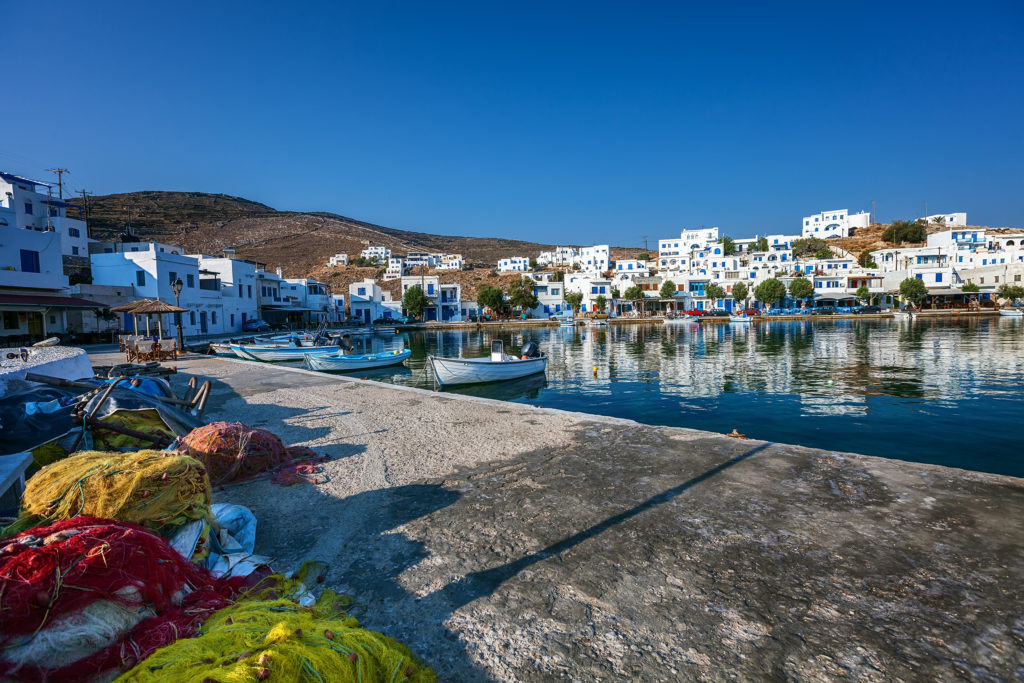
Heading west out of Chora after approx 15kms you will arrive at Kardiani. Here you will find a beautiful little village, with stunning views and a maze of little alleys with shops and cafes hidden away. It’s a beautiful spot for breakfast and sample the local bakery pastries, or if you are there later you could drop a few kms down into Ormos Kardianis for brunch where you could try their famous shrimp spaghetti or/and Kakavia, their as famous fish soup. All whilst sitting on the dock of the bay watching the tide roll away.

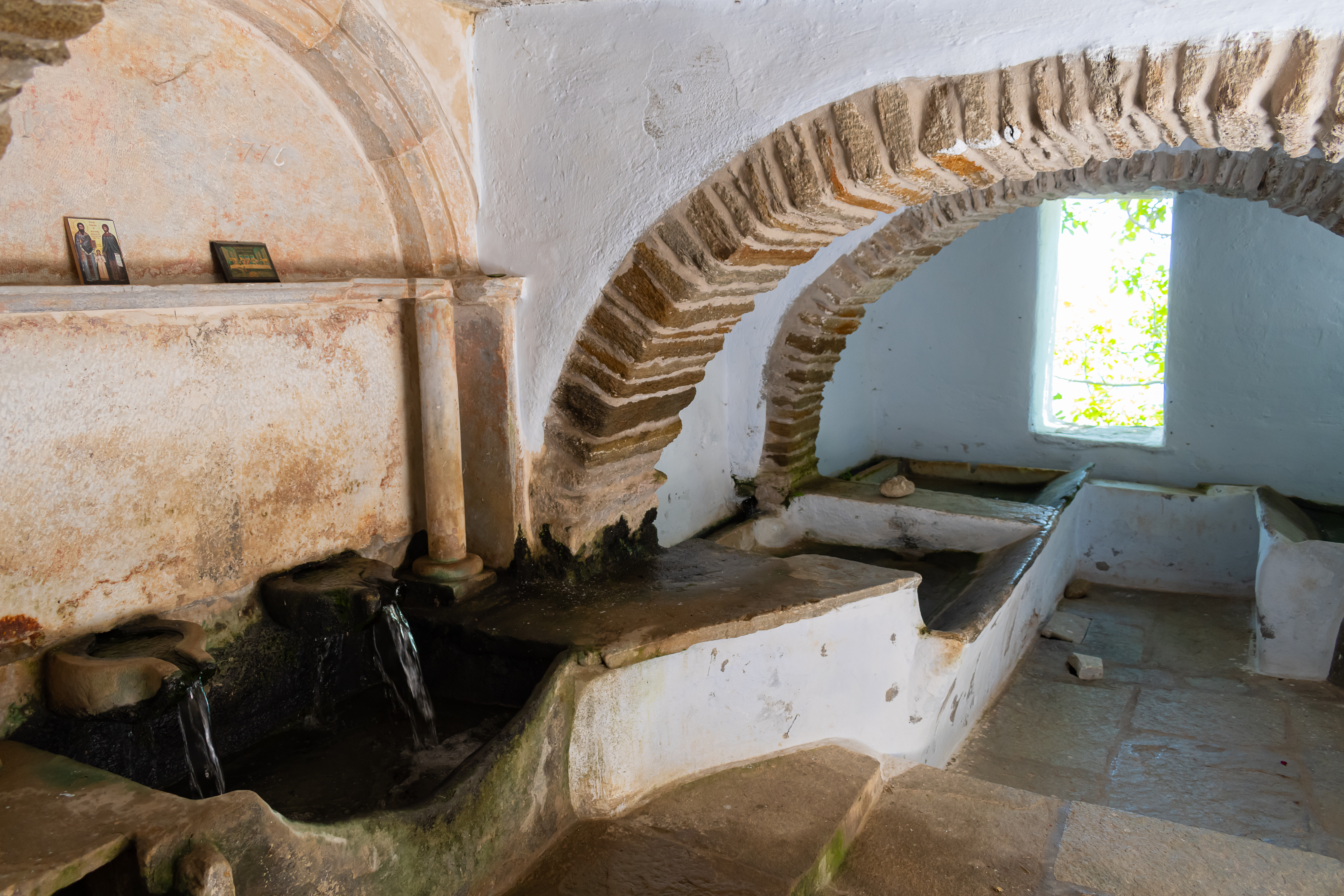
Just up the road, literally, you will arrive at Isternia, Another gorgeous Tinian village, with cobbled streets, Cycladic churches and mesmerizing views. After your visit to the village you could drive a few kms down to Ormos Isternion and take a dip or have grilled fish in the local restaurant that is so close to the see you can almost dip your toes in the water whilst you eat.
Following the main road, heading further north west you will arrive at Pyrgos. Pyrgos could probably be considered a metropolis compared to a lot of the tiny villages but really it’s still just a village with a lot of charm and beautiful whitewashed houses with colourful flowers. You could and should get lost in its Cycladic alleys, eat traditional desserts under the plane tree in the main square and visit its museums and artistic corners. You will find marble everywhere in Pyrgos, even houses made of it! It’s called ‘the village of artists’ because great personalities of art, such as the sculptor Ioannis Halepas (whose house is open to the public) and the painter Nikiforos Lytras came from here and with the marble streets, arches, churches and many monuments you feel like you are in an outdoor architectural museum.
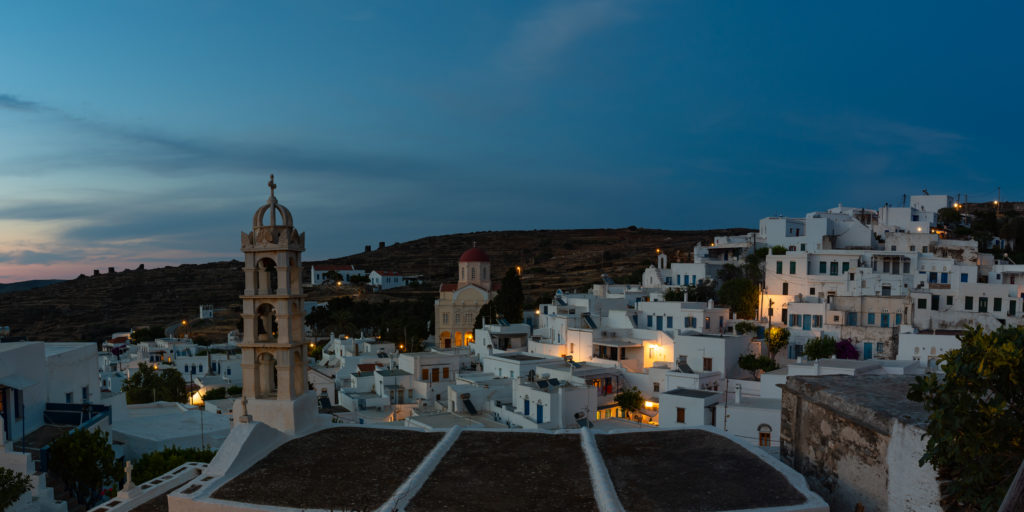
Still heading north but towards the east now, a few more kilometres further you will arrive at Panormos – Pyrgos and Panarmos are often spoken at the same time due to their proximity. This is the last village on the suggested route and is literally ‘the end of the road’ and you are still less than 30kms from Chora. Panormos is a gorgeous picturesque fishing village where the houses have been amphitheatrically built on the slopes around the bay. The port of Panormos played an important part in the shipping trade until the early 60’s being a transfer station for exported goods (mostly marble) and imported goods (mostly wheat for the mills). Once you have expolored the village why not venture down to the waterfront and spoil yourself with some local fish and other delights before having a swim and heading back to Chora.
Another route to go to visit villages is taking the other road out of Chora, heading east and your first village is Triantaros. Triantaros is a bit different from the other villages in that it has seen some development and is home to both locals and foreigners. It has the most incredible view and is a picturesque village with the typical white washed houses, alleys and cobbled streets – you can see why visitors would want to make it their home. The church of Agios Apostolos dominates the village square and it’s here you will find traditional bakeries and tavernas.

A few more kms along the road you will arrive at Dio Choria – close to Triantaros but very different! As you enter the postcard picture of Dio Choria you will be met by flowering bougainvillea, springs with gurgling water, plane trees framing the town square, medieval arches and the ‘best balcony of Tinos’.
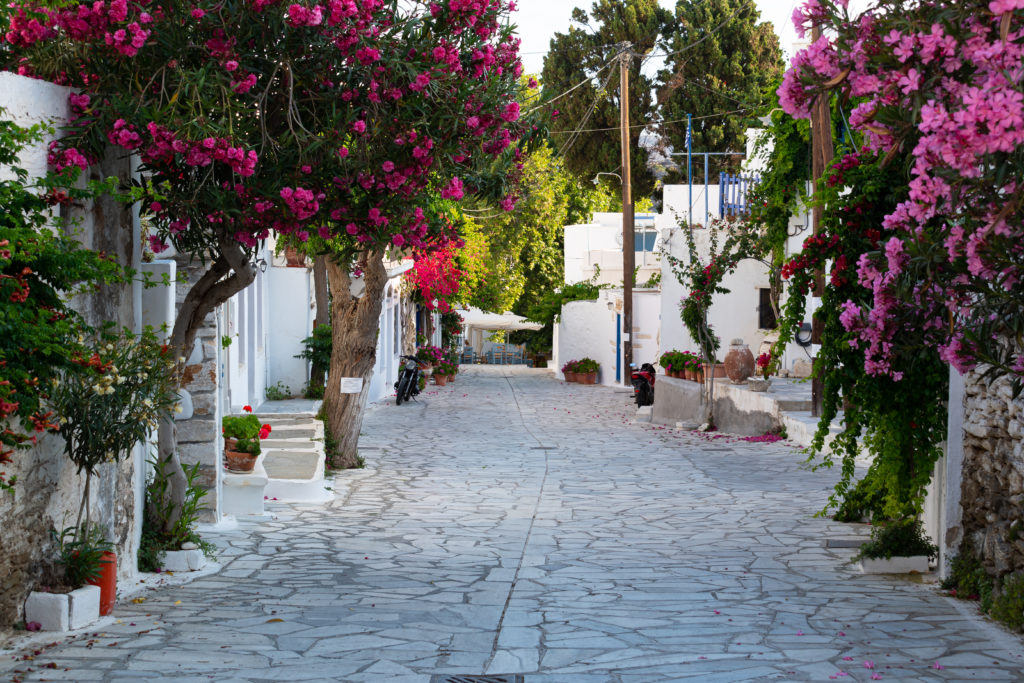
Once you have dragged yourself away from Dio Choria we are following the road again to Arnados for a quick visit. Arnados is the highest village on the island being built at the lofty altitude of 450m watch out for nose bleeds 😉 It’s located on the south side of Mount Kechrovouni near the Kechrovouni Monastery. The monastery gives the impression of a fortified village and is really worth a visit, along with the museum. After a whistle stop visit to Arnados we are on the move again, following the road to Volax.
Volax is special, very special, for 2 reasons; for the lunar landscape around it with massive, round and often animal shaped rocks and secondly for the lyrics and poems you will find on the village doors, windows and walls. These are works of famous poets such as Varnalis and Gatsos, as well as traditional Tinian songs. The rocks are behind the name of the village – Volax is the typical granite rock of the area. And of course in addition to the rocks and the lyrics, there are the typical Cycladic alleys and houses, tavernas and bakeries plus traditional baskets which you can see being made in the workshops.
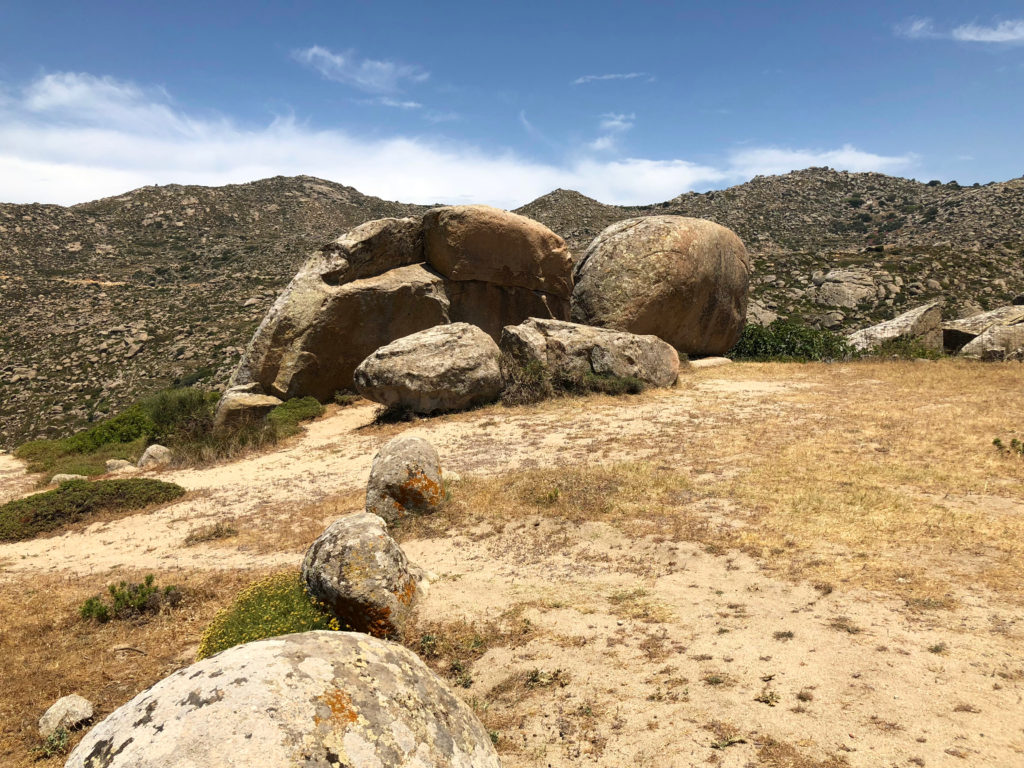
Its nearly 20 kms further along to our next and penultimate port of call, Komi. Komi is located at the beginning of a fertile plain which stretches to the sea, and it’s believed to date back to ancient times being there is reference to an inscription made in 4th century BC. Komi is built on the largest and most fertile plain on the island and it’s no coincidence that every May the festival Feast of the Artichoke is held – during this day approx 10,000 artichokes are consumed so if you like artichokes make sure you visit in May – artichokes being the main crop from this area. The village has a middle and lower village each with its own Catholic parish and church. Artichoke festival or not, Komi remains one of the most vibrant villages on Tinos.
Image credit: Benicia Magazine
And finally, the last village on this suggested tour, but possibly the best, Agapi. To get to Agapi you do need to veer off the main road, taking a smaller road – head north out of Komi and follow the signage. Agapi is one of the oldest and most traditional and hospitable villages on Tinos. Agapi is a typical mountain village, where most of the locals are farmers and the whitewashed houses are surrounded by verdant green pastures – thanks to a small river than runs through the village. Park on the outskirts and walk through the village so you don’t miss anything. On your walk you will see an old water mill, ornate dovecoats, an old school hall that is now a exhibition centre, the local church of St Agapitos that gives its name to the village. Below the village is an alley that looks like a tunnel, walk through here (you could stop at the kafeneion for a wonderful coffee) and as you come out of the tunnel you will have a panoramic view of Tinos and its surround. Spoil yourself with local delicacies and when you are spent, walk back to your car and decide where you are heading next … beach, Chora, boat cruise, or for a well earnt rest!
Credits and source of information:
Tinos360.gr
Tinosecret.gr
Greece.com
Justgreece.com
Greeka.com
Wiki






